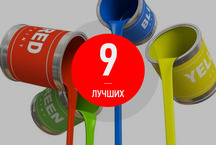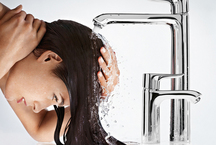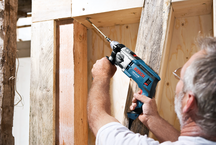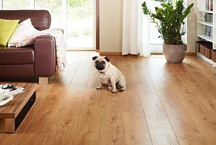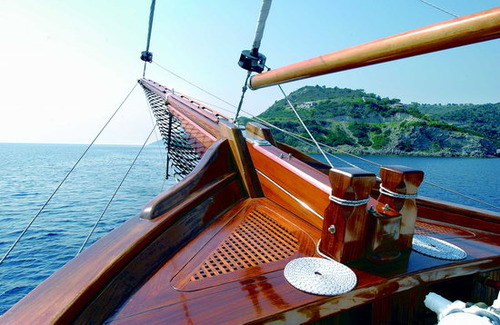
Yacht varnishes: brief educational program
The scope of yacht varnishes is very wide: from varnishing of country furniture to finishing the exterior walls of wooden houses, and even to cover the surface of musical instruments.
When the yacht varnish dries, a film is formed that has high protective and strength properties: the lacquered surface does not fade in the sun, is not afraid of abrasion and mechanical effects, perfectly preserves the appearance even in aggressive atmospheric conditions (sea fog, high humidity, etc.).
Being guided by the name of this class of paints and varnishes, you should not be under a delusion and hope that yacht varnishes will provide high-quality and long-term protection of any surface. Yes, the reliability limit of lacquer varnishes is much higher than that of ordinary varnishes, but it is necessary to take into account a number of some nuances. No matter how high quality yacht lacquer is, if you treat the walls of a newly built bath with them, fast cracking of the lacquer coating cannot be avoided.
Do not unconditionally believe and claims about the high durability of yacht varnish: first of all it is designed to protect against moisture, and the mechanical strength properties are significantly inferior to ordinary SUVs. One of the main advantages of yacht varnishes is elasticity, and the disadvantage is fragility at low temperatures. Choosing the best yacht lacquer for any work, you have to “balance”, carefully weighing all the pros and cons after a careful study of the composition, recommendations and instructions for use.
Some paintworkers believe that the original names like “yacht”, “shipboard” or “deck” are nothing more than marketing tricks to attract the attention of customers and convince them of the unique properties of varnishes. Indeed, in the generally accepted classification of varnishes, such categories are absent.
Yacht lacquer classification
Yacht lacquer classification according to the degree of gloss rather arbitrary. Glossy varnishes give the surface a bright shine, have a good reflectivity. The surface treated with matte varnish does not shine; there is practically no dust and minor contamination. An intermediate option is a semi-gloss or semi-gloss lacquer. However, it would be extremely prudent to select the lacquer only in appearance of the surface treated by it: the chemical composition, which determines the operational characteristics of the yacht varnish, is more important.
The main types of yacht varnishes:
- alkyd;
- urethane-alkyd or alkyd-urethane (depending on the ratio of components);
- acrylate.
As the sales statistics shows, the most popular are alkyd yacht varnishes. Most likely, buyers are guided by a fairly low price and relatively high rates of durability. However, alkyd varnishes due to their high toxicity cannot be used indoors: first, when drying, vapors of toxic solvents are released, and later - less volatile hazardous compounds. With an average intensity of mechanical effects, alkyd yacht varnishes retain the appearance of the surface for 4-5 years.
Composed urethane alkyd yacht varnishes toxic solvents are also present, but their amount is much lower than in alkyd solvents. Such varnishes are allowed to be used indoors. Urethane plasticizers prevent evaporation of hazardous chemicals. Thanks to them, the film formed after the complete drying of the lacquer, has a high flexibility and resistance to significant temperature changes. By the way, urethane-alkyd varnish is the only possible option for houses equipped with the “warm floor” system: other yacht varnishes are unlikely to withstand frequent temperature changes and will be covered with cracks.
Composed alkyd-urethane yacht varnishes alkyds prevail, which ensures a high drying rate and thermal stability. For high performance you have to pay a high toxicity.
The safest in terms of human exposure are acrylic yacht varnishesthat are water based. The content of toxic substances in them is minimized. For its intended purpose - finishing finishing of boat, ship and yacht surfaces - it is not recommended to use acrylate varnish; only processing of wood that is not in contact with water is allowed. However, some manufacturers of acrylic lacquers put on them the label "yacht", emphasizing the excellent performance characteristics of the product.
Top yacht varnishes
Choosing the best yacht varnish is quite a challenge. It is necessary to take into account many parameters: purpose, consumption, cost, environmental friendliness, special requirements, durability, etc. The table shows the most popular brands of yacht varnishes by decreasing popularity among consumers.
|
The brand |
Mark |
The foundation |
Purpose |
Notes |
Consumption |
Price / liter, rub. |
|
Tikkurila (Finland)
|
Tikkurila Supi Saunasuoja glossy |
acrylate |
Walls and ceilings in rooms with high humidity |
Does not contain substances that protect against UV |
1 liter for 11-12 meters2 |
From 570 |
|
Tikkurila UNIKA SUPER semi-gloss |
Urethane alkyd |
Processing of internal and external surfaces |
Resistant to UV radiation and temperature extremes |
1 liter per 10-11 m2 |
From 550 |
|
|
Tikkurila UNIKA SUPER Matt |
Urethane alkyd |
Any internal and external wooden surfaces |
Supersteady to climatic influences |
1 liter for 11-12 meters2 |
From 570 |
|
|
Marshall (Turkey) |
Marshall protex Glossy |
Alkyd urethane |
Recommended for external use. |
Plastic, soft |
13-14 m2 |
From 300 |
|
Marshall Protex Yat Vernik matt |
Urethane alkyd |
Recommended for external use. |
Resistant to high humidity, wear |
11-12 m2 |
From 440 |
|
|
PARADE (Russia) |
PARADE L20 glossy |
Alkyd urethane |
Recommended for external use. |
Does not turn yellow, emphasizes wood texture |
10 m2 |
From 270 |
|
Poli-R (Turkey) |
Poli-r Semi-matt |
Alkyd urethane |
Recommended for external use. |
The optimal combination of hardness and elasticity |
13-14 m2 |
From 290 |
|
Prestige (Russia) |
Prestige Glossy |
Alkyd |
For external use only |
Fast drying, stable in salt water |
7-9 m2 |
From 160 |
|
NEOMID (Russia) |
NEOMID YACHT Glossy, matte, semi-matte |
Alkyd urethane |
For external and internal use |
Increased resistance to weathering and wear |
10-13 m2 |
From 190 |
|
Eurotex |
Eurotex Rogneda Glossy, semi-gloss |
Alkyd urethane |
For external and internal use |
High elasticity, resistant to salt water |
6-7 m2 |
From 320 |
Which yacht varnish is better to buy?
According to statistics, only one of the hundreds of packages of yacht varnish is purchased for the treatment of boat and ship surfaces. This is not surprising: the number of yachts in Russia per capita leaves much to be desired. However, the sales of yacht varnishes are constantly increasing, which is largely due to the rapid growth in the popularity of individual wooden houses. Wood is a very capricious material, and without reliable protection it quickly becomes useless. Yacht varnish helps to reliably protect the tree from any kind of atmospheric exposure: ultraviolet radiation, changes in humidity and temperature, and in coastal areas - from aggressive sea fog. The range of good yacht varnishes is quite wide, and there are no products with universal properties and suitable for solving any task. Below is a table of the best brands of yacht varnishes, depending on the functional purpose.
|
Task |
The best brand of yacht varnish |
|
Surface treatment of boats, ships and yachts (sea water, above the waterline) |
Prestige, Rogneda Eurotex |
|
Surface treatment of boats, ships and yachts (fresh water, above the waterline) |
Tikkurila UNIKA SUPER, NEOMID YACHT |
|
Processing of wooden surfaces in rooms with high humidity |
Tikkurila Supi, Marshall Protex Yat Vernik |
|
Finishing of wooden surfaces that are not exposed to intense mechanical stress (walls, railings, frames, doors) |
Prestige, PARADE L20 |
|
Finishing of wooden floors, outdoor furniture |
Marshall Protex Yat Vernik, Poli-R |
Use of yacht varnishes: simple rules
Whichever yacht varnish you choose, the method of application is identical for all brands.
- First, before applying the wood should be thoroughly dried and have a residual moisture content of not more than 20%.
- Secondly, it is advisable to treat the wooden surface with a primer with antiseptic additives before finishing the varnish.
- Thirdly, in order to achieve an optimal result, it is necessary to apply 2-3 coats of varnish. If you wish, you can experiment with color by adding a compatible color scheme.
- Fourth, each subsequent layer should be applied only after complete drying of the previous one.
If the yacht lacquer is used for processing the surface reprocessing, the previous layer must be carefully removed, otherwise swelling and cracking are possible.
It is rather difficult to foresee all the nuances of the use of yacht varnishes, therefore when buying it is advisable to get recommendations from a consultant who is competent in matters of production and application of paint and varnish coatings.
